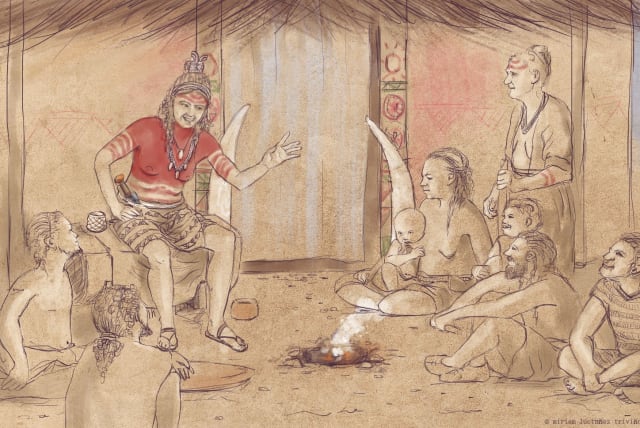Spain's entombed 'Ivory Lady' reveals ancient female leadership - study

The tomb, excavated in 2008, was more impressive than any other known from the Iberian peninsula from the time.
A 2008 archaeological discovery of skeletal remains, found buried with artifacts such as a crystal dagger, an ostrich eggshell, and an elephant's tusk, revealed an alleged figure of historical importance.
However, what researchers formerly believed was a man between the ages of 17 and 25 - that they aptly named the "Ivory Man," due to his believed status - was recently uncovered to actually be a female after a pelvic bone analysis.
In a peer-reviewed study originally published in Scientific Reports, ancient bones were able to help identify the gender of the remains. Though initially misgendered, tooth enamel from the remains was able to help identify the "Ivory Man" as the "Ivory Woman."
This tooth enamel held a peptide specific to gender called amelogenin, only identified in a laboratory. This study analyzed a molar and incisor extracted from the skeleton to identify the presence of a gene responsible for producing amelogenin, found in the X chromosome. This gene, AMELX, helped confirm the identity as female as opposed to male.
“We didn’t expect it would turn out to be a woman. And this came as a surprise. So, this forced us to rethink everything about this site,” study author Leonardo García Sanjuán, a professor of prehistory at the University of Seville, said upon release of the study.
How can you tell what a skeleton's biological gender identity was?
Traditionally, skeletons were assigned genders by the width of their pelvic openings, however, those bones are both thin and easily susceptible to damage throughout the years. Warmer climates can impact the gender study of ancient human remains, however, amelogenin is found to have good preservation properties, making it easier to identify the sex of remains even centuries later - whether or not a full skeleton is available.
The use of this method to identify the sex of skeletal remains also means that archaeologists can further change the believed gender roles believed to be held in ancient society. “In the past, it was not uncommon for an archaeologist to find (remains) and say, ‘OK, this individual has a sword and a shield. Therefore, he’s a man.’ Of course, deeply mistaken, because it assumes that in the past gender roles were the way we conceive them today,” García Sanjuán stated.“This technique, we think, is going to open up an entirely new era in the analysis of the social organization of prehistoric societies.” Now, researchers can use this new method to help disprove that men have been the only ones hunting in the ancient world, breaking a time-honored stereotype that assists in how we can best understand the ancient world.
So, just who was the "Ivory Lady," and what makes her so special?
According to the study, radiocarbon dating was able to reveal that graves surrounding this mysterious leader revealed that she was seen as an important figure for at least 200 years following her death. The people buried around her were buried with artifacts like a crystal dagger, believed to be the most important of the prehistoric graves found in the Iberian peninsula for generations.
"When we compare the Ivory Lady to these people, she stands head and shoulder above all of them, so we do not hesitate to say that she was the most socially prominent person of her time and this is of course remarkable because it is a female,” added Garcia Sanjuán.Her tomb was luxurious compared to those around her. Not 325 feet away, another tomb of comparable luxury was found. Researchers told the BBC that they believed these women held leadership roles and that they helped restructure a new hierarchy in Europe during the Copper Age.
Researchers also believe that since there were no infant burials in the area, her royal status was likely not earned by blood. Rather, findings suggested that she earned her status by hard work and merit throughout her life.
Though her biological gender identity may not be disputable, her personal gender identity is unconfirmed.
“She must have been a highly charismatic person. She probably traveled or did have connections with people from faraway lands. There is not a single burial (in the region) that remotely compares to the Ivory woman in terms of the wealth she was buried with. Not women, not men. It could be that they had some special status that was more significant than their gender identity or… there was not a binary gender system,” concluded Sanjuan.
Jerusalem Post Store
`; document.getElementById("linkPremium").innerHTML = cont; var divWithLink = document.getElementById("premium-link"); if (divWithLink !== null && divWithLink !== 'undefined') { divWithLink.style.border = "solid 1px #cb0f3e"; divWithLink.style.textAlign = "center"; divWithLink.style.marginBottom = "15px"; divWithLink.style.marginTop = "15px"; divWithLink.style.width = "100%"; divWithLink.style.backgroundColor = "#122952"; divWithLink.style.color = "#ffffff"; divWithLink.style.lineHeight = "1.5"; } } (function (v, i) { });

